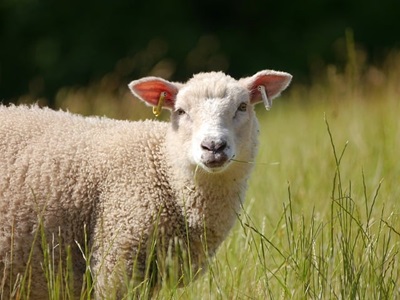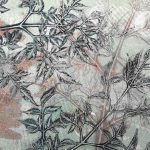
Natural Fibres: Sources, Processing, and Environmental Impact
Natural fibres have been integral to human civilization for millennia, providing materials for clothing, textiles, and other essential goods. With increasing awareness of sustainability and environmental impact, the use of natural fibres has garnered renewed interest. This article delves into the various natural fibres, their sources, harvesting and processing methods, environmental impact, properties, and end uses, as well as their biodegradability and recyclability.
Sources of Natural Fibres
Natural fibres are derived from plants, animals, and minerals. The most common natural fibres used in the textile industry include:
- Cotton: Sourced from the cotton plant’s seed hair.
- Wool: Obtained from the fleece of sheep.
- Silk: Produced by silkworms spinning their cocoons.
- Linen: Made from the flax plant’s stalk.
- Hemp: Extracted from the hemp plant’s stalk.
- Jute: Derived from the jute plant’s stem.
- Bamboo: Processed from bamboo grass.
- Alpaca: Harvested from the fleece of alpacas.
- Angora: Collected from angora rabbits.
- Camel: Sourced from the undercoat of camels.
- Yak: Obtained from the undercoat of yaks.
Harvesting and Processing into Yarns
Cotton
- Harvesting: Cotton is picked either manually or using machines.
- Processing: It undergoes ginning to separate fibres from seeds, carding to align fibres, and spinning to create yarn.
Wool
- Harvesting: Sheep are sheared once or twice a year.
- Processing: Wool is cleaned (scoured) to remove lanolin and impurities, carded, and then spun into yarn.
Silk
- Harvesting: Silkworms spin cocoons, which are then harvested.
- Processing: Cocoons are boiled to kill the pupae and unwind the silk filaments, which are then spun into yarn.
Linen
- Harvesting: Flax plants are pulled from the ground.
- Processing: Retting (rotting) breaks down the plant stalk, fibres are extracted, cleaned, and spun into yarn.
Hemp
- Harvesting: Hemp is cut or pulled from the ground.
- Processing: Retting and decortication separate fibres from the stalk, followed by spinning into yarn.
Jute
- Harvesting: Jute plants are harvested by hand.
- Processing: Retting, stripping, and spinning processes create yarn from the fibres.
Bamboo
- Harvesting: Bamboo stalks are cut down.
- Processing: Bamboo is mechanically crushed and enzymatically treated to extract fibres, which are then spun into yarn.
Alpaca
- Harvesting: Alpacas are sheared once a year.
- Processing: Fleece is cleaned, carded, and spun into yarn.
Angora
- Harvesting: Angora rabbits are gently combed or sheared several times a year.
- Processing: The fibres are cleaned, carded, and spun into yarn.
Camel
- Harvesting: The undercoat is collected during the moulting season.
- Processing: Fibres are cleaned, carded, and spun into yarn.
Yak
- Harvesting: The undercoat is collected through combing or shedding during the spring.
- Processing: Fibres are cleaned, carded, and spun into yarn.
Environmental Impact of Growing and Processing
Cotton
- Water Use: Highly water-intensive, especially in regions with irrigation.
- Chemicals: Heavy pesticide and fertilizer use.
- Impact: Soil degradation, water pollution, and high carbon footprint.
Wool
- Water Use: Moderate, mainly for washing.
- Chemicals: Pesticides for parasite control, detergents for scouring.
- Impact: Land use, methane emissions from sheep.
Silk
- Water Use: Moderate.
- Chemicals: Limited use, mainly for cleaning.
- Impact: Mulberry cultivation affects biodiversity.
Linen
- Water Use: Low.
- Chemicals: Minimal pesticide and fertilizer use.
- Impact: Low ecological footprint, biodegradable.
Hemp
- Water Use: Low to moderate.
- Chemicals: Minimal use of pesticides and fertilizers.
- Impact: Soil improvement properties, biodegradable.
Jute
- Water Use: Moderate.
- Chemicals: Minimal pesticide use.
- Impact: Biodegradable, low environmental footprint.
Bamboo
- Water Use: Moderate.
- Chemicals: Some chemical treatments in fibre extraction.
- Impact: Renewable resource, biodegradable.
Alpaca
- Water Use: Low.
- Chemicals: Minimal chemical use.
- Impact: Low environmental impact, biodegradable.
Angora
- Water Use: Low.
- Chemicals: Minimal chemical use.
- Impact: Ethical concerns about animal welfare, biodegradable.
Camel
- Water Use: Low.
- Chemicals: Minimal chemical use.
- Impact: Low environmental impact, biodegradable.
Yak
- Water Use: Low.
- Chemicals: Minimal chemical use.
- Impact: Low environmental impact, biodegradable.
Properties, Pros, and Cons of Natural Fibres
Cotton
- Properties: Soft, breathable, absorbent.
- Pros: Comfortable, widely available.
- Cons: Environmental impact, shrinkage.
Wool
- Properties: Warm, elastic, absorbent.
- Pros: Insulating, moisture-wicking.
- Cons: Can be itchy, prone to shrinkage.
Silk
- Properties: Luxurious, strong, shiny.
- Pros: Smooth, hypoallergenic.
- Cons: Expensive, delicate care.
Linen
- Properties: Strong, breathable, absorbent.
- Pros: Durable, cool to wear.
- Cons: Wrinkles easily, less elastic.
Hemp
- Properties: Strong, durable, breathable.
- Pros: Resistant to mould, softens with wear.
- Cons: Can be coarse, limited colour options.
Jute
- Properties: Strong, coarse.
- Pros: Biodegradable, cost-effective.
- Cons: Not as soft, limited use in apparel.
Bamboo
- Properties: Soft, breathable, antibacterial.
- Pros: Renewable, biodegradable.
- Cons: Chemical processing concerns, durability issues.
Alpaca
- Properties: Soft, warm, hypoallergenic.
- Pros: Lightweight, strong, less prickly than wool.
- Cons: Higher cost, limited availability.
Angora
- Properties: Extremely soft, warm, lightweight.
- Pros: Luxuriously soft, high insulation.
- Cons: Ethical concerns, requires blending with other fibres for durability.
Camel
- Properties: Warm, soft, durable.
- Pros: Excellent insulation, less greasy than wool.
- Cons: Higher cost, limited availability.
Yak
- Properties: Warm, soft, strong.
- Pros: Comparable to cashmere, durable.
- Cons: Higher cost, limited availability.
Environmental Impact of Disposal
Natural fibres generally decompose more easily than synthetic fibres. However, the rate of decomposition varies:
- Cotton, Linen, Hemp, Jute, Bamboo, Alpaca, Angora, Camel, Yak: Biodegradable and compostable under the right conditions.
- Wool: Biodegradable but can produce methane during decomposition.
- Silk: Biodegradable but may require specific conditions.
Recycling options for natural fibres are also expanding, with many fibres being repurposed into new textiles, insulation, and other products.
Conclusion
Natural fibres offer a sustainable alternative to synthetic materials, with diverse applications and generally lower environmental impacts. However, considerations around water use, chemical treatments, and biodegradability are crucial for making informed choices. By prioritizing natural fibres and supporting sustainable practices, we can contribute to a more environmentally friendly textile industry.
Further reading:








